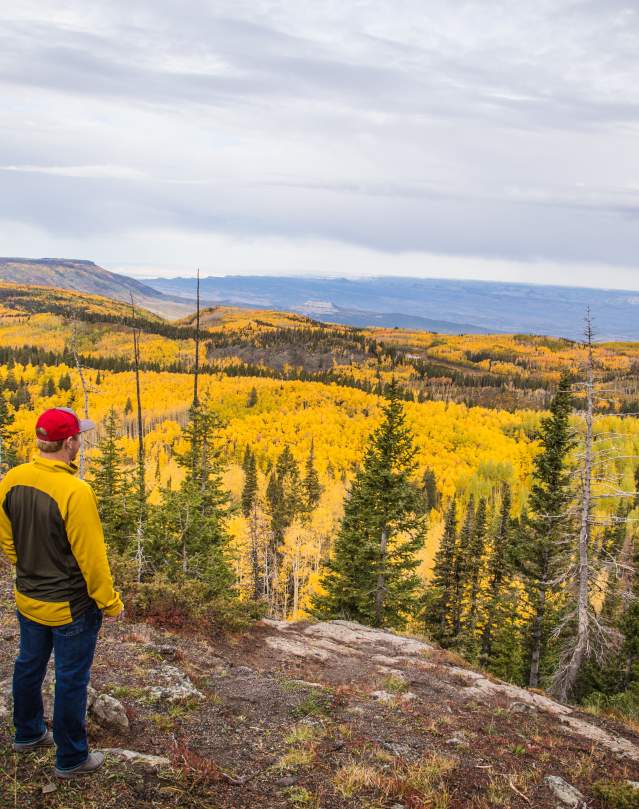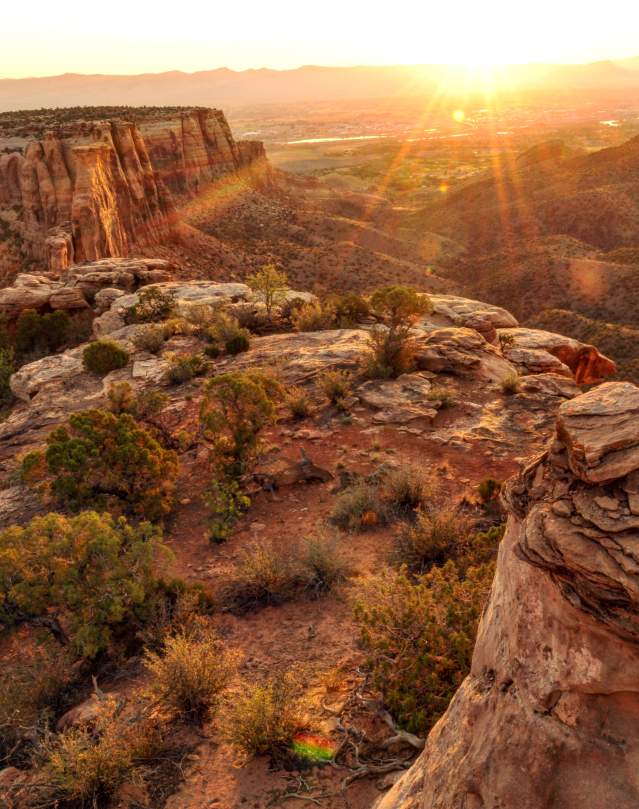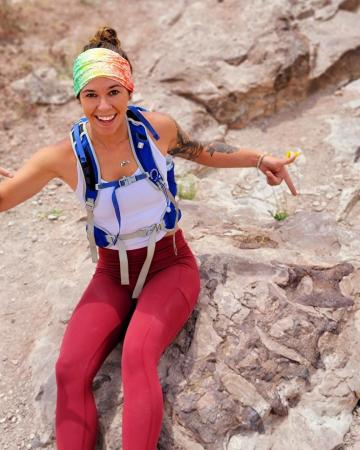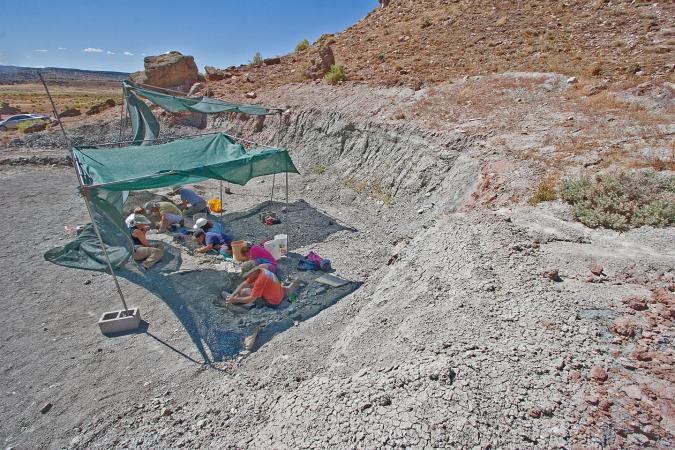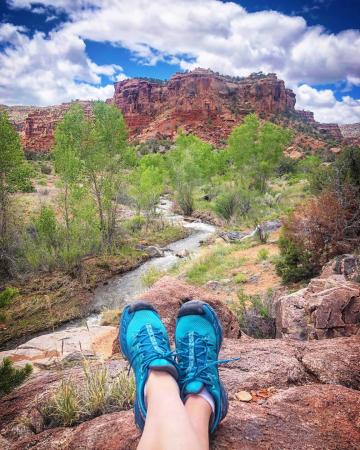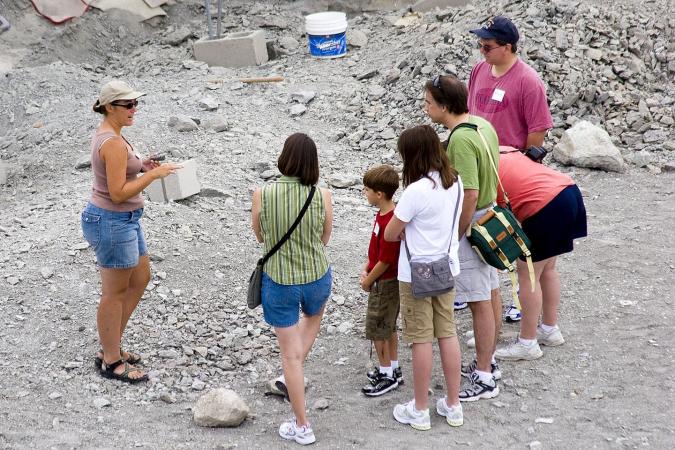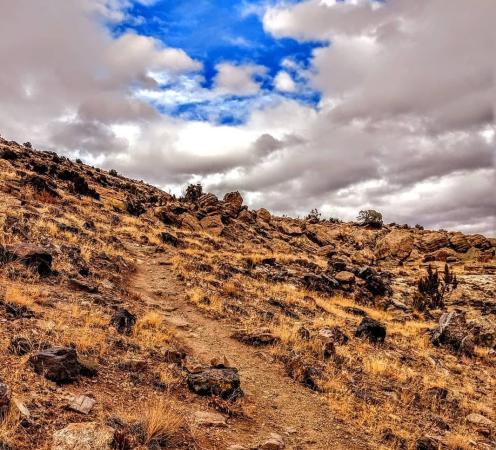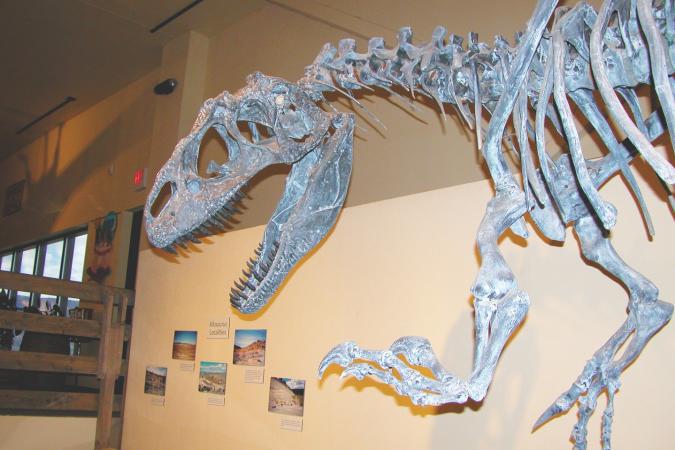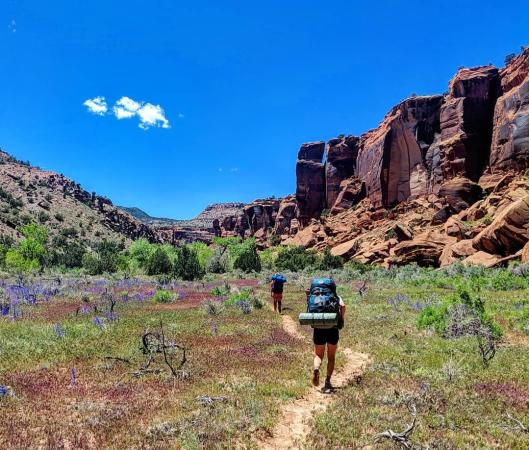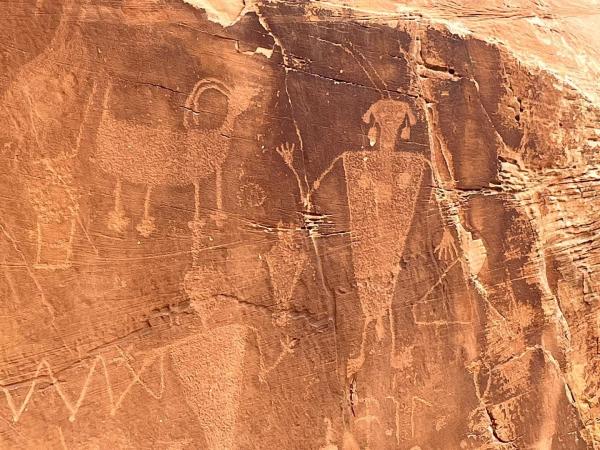You don’t have to travel back in time to discover where the dinosaurs used to roam. Millions of years ago, Grand Junction and much of Colorado were occupied by some great prehistoric species. The horned Triceratops munched on local flora and the fearsome Tyrannosaurus hunted its prey in Grand Junction. How do we know this? Many groundbreaking dinosaur fossil discoveries have been made in Grand Junction, Colorado. Today, there are numerous ways to explore Grand Junction’s prehistoric past, from a local dinosaur museum to several dinosaur hiking trails.
Discovering Dinosaurs
It may be hard to imagine, but millions of years ago the entire state of Colorado was underwater. An expansive, shallow sea existed for hundreds of millions of years where many prehistoric species, like brachiopods and trilobites lived. Their fossils have given some indication of this faraway past. Roughly 100 million years ago, the sea began to shrink, leading to lush landscapes and the emergence of new species. Over time, the geography continued to change forming deserts, oceans and even rainforests.
This dynamic environment proved to be the ideal ecosystem for many species of dinosaurs, including large land-based species like the Stegosaurus, Triceratops, Apatosaurus and the mighty T-Rex. Humans became aware of Colorado’s rich prehistory in the 1860s when archeologists uncovered the first fossils. Over the next few decades, significant archaeological finds were made across Colorado, including the world’s first Stegosaurus fossils at Dinosaur Ridge near Denver in the 1870s, and the discovery of a nearly complete fossilized Apatosaurus—aka Brontosaurus—in 1901 at Dinosaur Hill, which is only a quick 20-minute drive from Grand Junction.
Dinosaur Hill
Today, Dinosaur Hill is not only a prehistoric archaeological site, it’s also a family-friendly hiking trail. Located just outside Grand Junction, the trail takes you through one of Colorado’s richest dinosaur fossil troves alongside beautiful scenery and vistas. While many fossils have been excavated and now reside in museums, dinosaur enthusiasts still have lots to see on the walk, including the cave where the Apatosaurus fossil was found over a century ago. The famous long-necked Apatosaurus fossil can be found at the Field Museum of Natural History in Chicago.
Dinosaur Hill is a mile-long loop trail suitable for all ages and skill levels. Interpretive signposts are positioned along the trail to teach visitors about various excavation sites where fossils were found. Highlights include the aforementioned Apatosaurus cave and an old quarry, where archaeologists dug and excavated many prehistoric fossils. From the trail’s highest point, you can even see the mighty Colorado River.
The Dinosaur Trail is the perfect outing for individuals, couples and families. The site is equipped with restrooms, parking, designated picnic areas and an information kiosk. The trail is relatively short, typically taking between 60-90 minutes. While it is a fairly easy hike, the trail includes some inclines and slopes, so wear comfortable walking shoes. Dogs are allowed as long as they are kept on a leash.
Hiking in Grand Junction
Dinosaur Hill is only one of many trails in the Grand Junction area. From red-rock canyon hikes in the Colorado National Monument to a 22-mile paved trail along the Colorado River, Grand Junction is surrounded by over 76% public land, so finding your next hiking adventure is easier than you think. For those who indulge themselves in history, Grand Junction also offers other historic areas to explore like Rabbit Valley and the Dominguez-Escalante National Conservation Area.
The Trail Through Time in Rabbit Valley is less than an hour from Downtown Grand Junction and has an active fossil excavation quarry. At 1.5 miles, the trail is slightly more ambitious than Dinosaur Hill, but is still family-friendly and includes various interpretive signposts that teach hikers about the many fossils found in the area.
The Escalante Canyon Petroglyph trail is a short 0.8-mile hike round trip in the Dominguez-Escalante National Conservation Area. As the name suggests, this hike is known for several petroglyphs carved into the stone along the trail. The well-preserved rock carvings are not quite as old as the dinosaurs, but they still date back thousands of years.
Dinosaur Hill, Trail Through Time and Escalante Canyon Petroglyph trail are all accessible year-round, but please keep in mind that the terrain can become muddy or slippery at certain times of the year, particularly in winter. During the summer, wearing protective sun gear and packing adequate water is advised, as there is little shade along these trails.
Planning a Grand Junction Visit
There are many unique experiences to discover in Grand Junction, including the rich history of the area which is on display at the Museum of the West. From the Colorado National Monument, part of the National Park Service, to the Grand Mesa, the largest flat-top mountain in the world, exploring is easy and accessible. If you’re looking for travel inspiration or to fill your itinerary while in town, check out the Official Grand Junction Visitor Guide.

